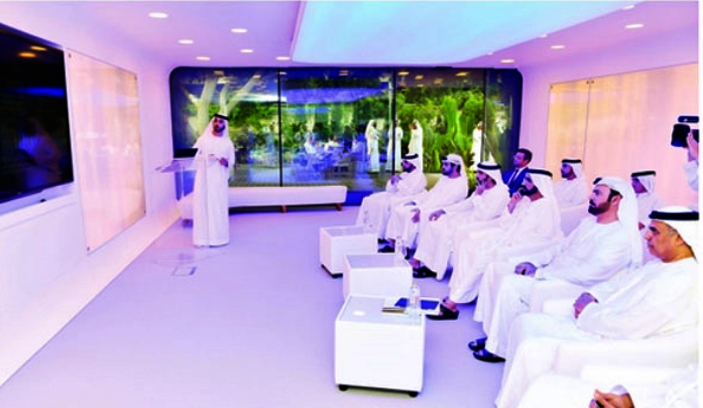

Running counter to its reputation for cloud-piercing skyscrapers, the City of Dubai in the United Arab Emirates has built the world’s first 3D-printed office building, and it is only one story tall.
Even so, this modest, 2,690-sq-ft office structure may cast an even larger shadow over commercial construction than any record-setting tower. After all, what was the last project built in Dubai that made you wonder if you could replicate it in your town?
Well, that is the question being asked all over the world now after Dubai last month successfully 3D-printed a new office building in just 17 days, installing and assembling its segments in just two more. “This paves the way for a future where 3D printing can help resolve pressing environmental and urbanization issues, and it allows us to deliver highly customized spaces for our clients in a much shorter time frame,” said Richard Hammond, a principal with project architect Gensler. The building team also included structural engineer Thornton Tomasetti.
“This is an experience we present to the world on implementing future technology in our lives, and it represents a new milestone for the UAE as a global leader
In fact, cost and labor savings are key selling points. As constructed, the new building cost just $140,000 to print and assemble and, according to 3dprint.com, that approach can reduce labor costs by 50% to 80%, and cut construction waste by 30% to 60%. The Dubai structure required a team of only 18 craftsmen: one to monitor the function of the printer; seven workers to install the building components on site; and 10 electricians and specialists to address MEP engineering issues.
Assuming the concept flourishes, Hammond said he can envision home buyers everywhere selecting customized components online. He also foresees the potential of “house-printing factories” to create shelters and, as structures aggregate, entire community centers. Hammon added that fabrication eventually will assume the format of an assembly line, using pre-installed walls to expedite the process.
“We have made great strides, but this is only the beginning of what is possible,” added Kyle E. Krall, a senior principal with Thornton Tomasetti. “We can potentially combine 3D printing technology with both emerging and existing materials used in new ways, to take our industry in a fresh direction.”
“We can potentially combine 3D printing technology with both emerging and existing materials used in new ways
The new office was undertaken as part of The Dubai 3D Printing Strategy, under the auspices of the Dubai Future Foundation, in collaboration with Chinese 3D printing specialist WinSun Global. It incorporates some materials indigenous to conventional construction, including glass-fiber-reinforced gypsum. However, WinSun Global implemented a proprietary mixture of concrete for the facility’s frame, requiring Thornton Tomasetti to perform additional calculations, stress tests and other evaluations to ensure components were structurally sound. Materials also underwent extensive testing in both China and the United Kingdom.
One of the building’s defining features —an 820-sq-ft arc span— was selected for purposes of stability. As the technology evolves, though, the designers don’t belt believe unique or unusual forms should not significantly impact project costs. Though built with great brevity, the office building still required a year of planning by Gensler, Thornton Tomasett, and WinSun Global. All three had worked together before.
HOW IT CAME TOGETHER
The Dubai project is actually a complex of interconnected buildings, with each made of multiple concrete components fabricated in a Shanghai factory by a 20-ft-tall, 120-ft-long, and 20-ft-wide printer, equipped with a robotic arm. Employing WinSun Global’s tilt-up technology, for which floors, walls and ceilings all are fabricated on their sides, the printer extruded layer upon layer of cement to create 17 modules. Modules were divided in half to promote ease of shipping to Dubai by container. On site, mobile 3D printers were deployed to assist in finalizing construction of the assembly of modules. Advanced computers also were on hand to promote quality control.
The finished office facility marks a significant first step toward implementing the city’s 3D Printing Strategy, which calls for 30% of its buildings to be 3D-printed by 2030. In fact, 3D printing efforts also are under way in other local industries. Medical uses, such as false teeth, already are a particular focus.
“We see this project as a case study that will benefit regulators as well as research and development at the regional and international levels on the real application of 3D printing technology,” said Sheikh Mohammed Al Maktoum, UAE prime minister and Emir of Dubai. Speaking to reporters, Dubai Future Foundation CEO Saif al-Aleeli added: “The future will be 3-D printed. I won’t be surprised if, 20 years down the road, whole cities will be 3D printed.”
Presumably, that prediction stretches well beyond the UAE.


Discussion
Be the first to leave a comment.
You must be a member of the BuiltWorlds community to join the discussion.